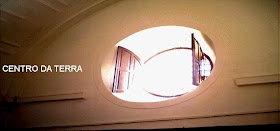Herzog & de Meuron Shapes A Processing Plant with Rammed Earth
Rammed earth gets a design-savvy redux in Ricola's newest facility.
By Blaine Brownell
Although it may come as a surprise to architects practicing in Europe and North America, earthen construction is a prominent material in other parts of the world, with more than 30 percent of the global population using earth for building construction.
Despite this discrepancy—or perhaps because of it—Basel, Switzerland–based Herzog & de Meuron employed the material for its design of Ricola's herb center in Laufen, Switzerland. As the firm's seventh project for the Swiss herbal company, the Kräuterzentrum production facility consolidates the manufacturer’s processing operations, such as drying, cutting, mixing, and storing herbs, under one roof.
Rammed earth makes a good material choice, due to its low embodied energy and its intrinsic ability to regulate temperature and humidity effectively. The material specified for this project comes from local quarries and is a mixture of clay, soil, and marl (an unconsolidated soil composed of clay and lime). Ever the material experimenters, Herzog & de Meuron chose to prefabricate panels of rammed earth in a nearby factory and have them hoisted into place by crane, rather than construct the material in situ, as is typically done. The architects also chose to incorporate lime mortar and volcanic tuff into every eighth layer of the material as way to prevent erosion.
There is an obvious irony in the fact that one of the world’s most materially innovative design practices has selected one of the oldest and most common materials for its latest project. However, given the relative ignorance about rammed earth in many parts of the world today, the Kräuterzentrum serves as a welcome and inspiring example of a more environmentally sensitive architecture.
Blaine Brownell, AIA, is a regularly featured columnist whose stories appear on this website each week. His views and conclusions are not necessarily those of ARCHITECT magazine nor of the American Institute of Architects.
Rammed-earth walls support Ricola's new herb center in Laufen, Switzerland.
Credit: Ricola
The clay, soil, and other fillers comprising the panels were sourced from quarries near the facility.
Credit: Ricola
The rammed-earth panels were fabricated off site.
Credit: Ricola
More than 30 percent of the global population uses earth as a construction material.
Credit: Ricola
Original post here
Original post here


























![Terra [In]cognita project: Earthen architecture in Europe](http://1.bp.blogspot.com/-36uMVOoZMLE/TazQAiZE1KI/AAAAAAAAByA/NCxO8IKqLTg/s285/logoterraincognita.jpg)
